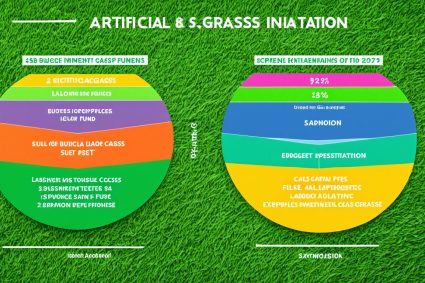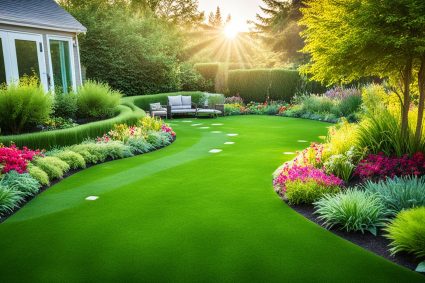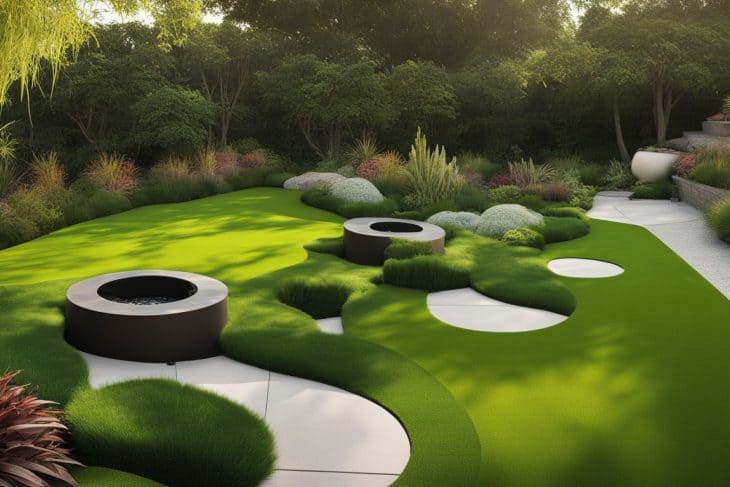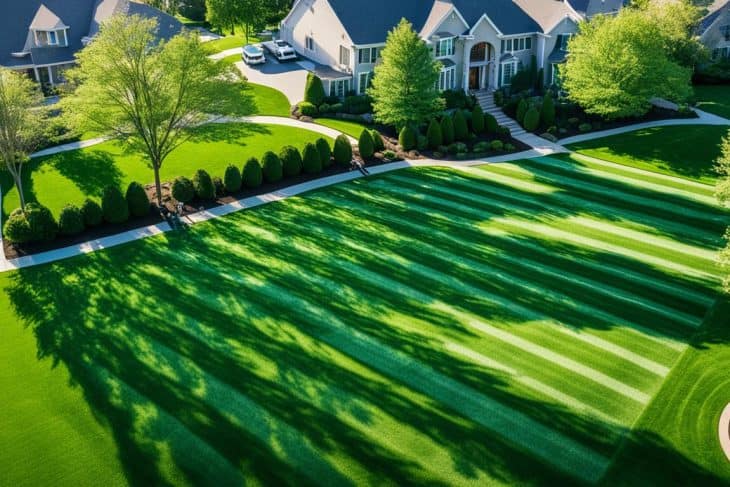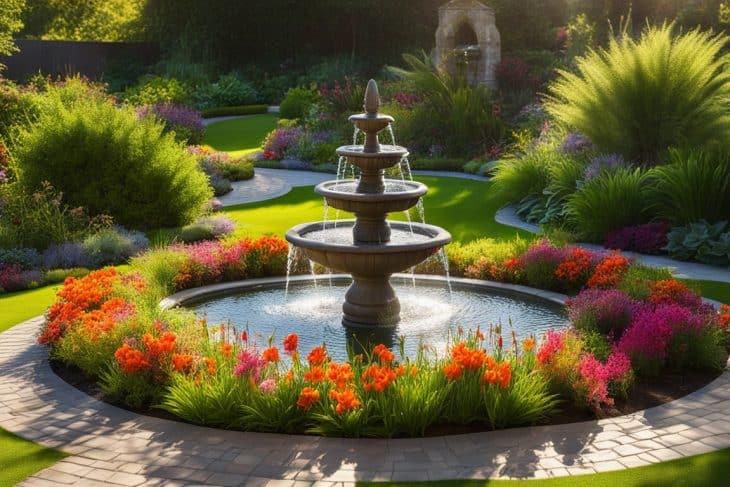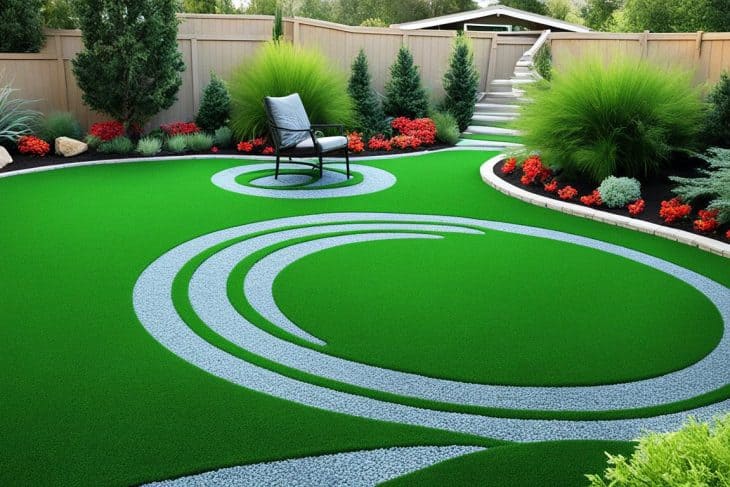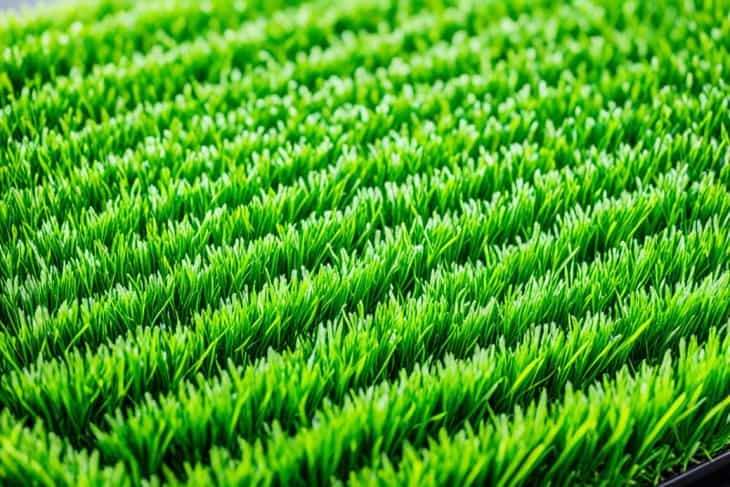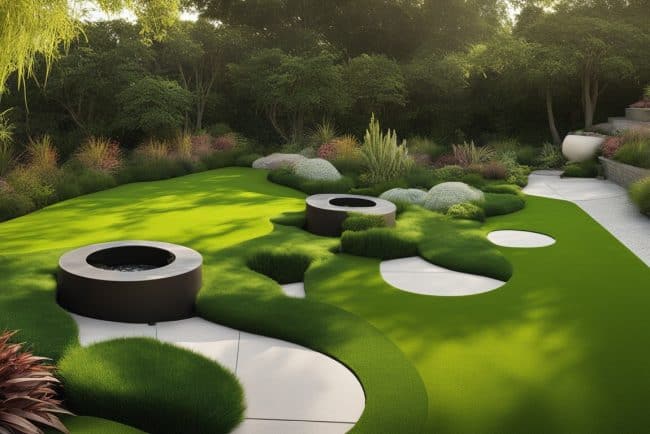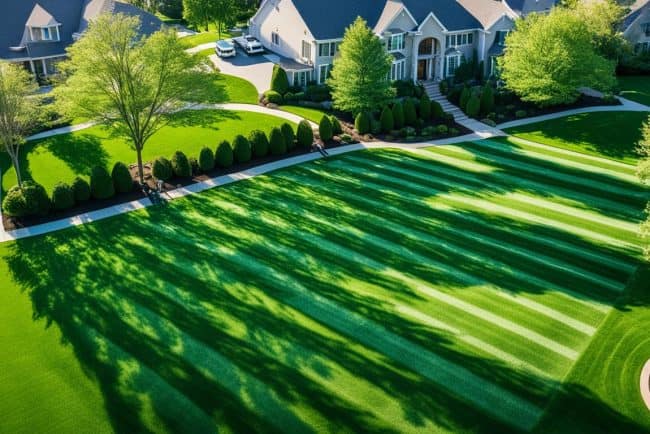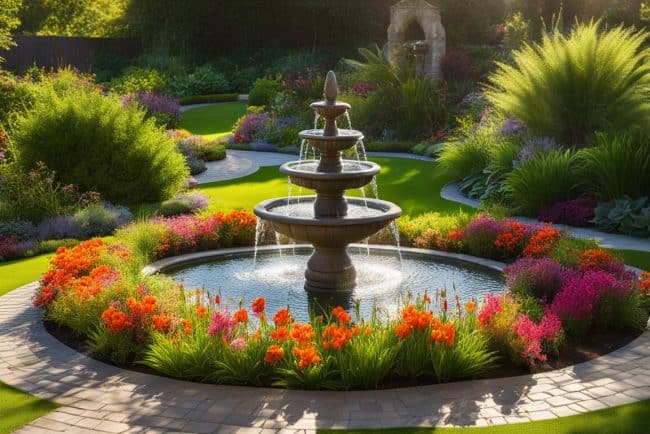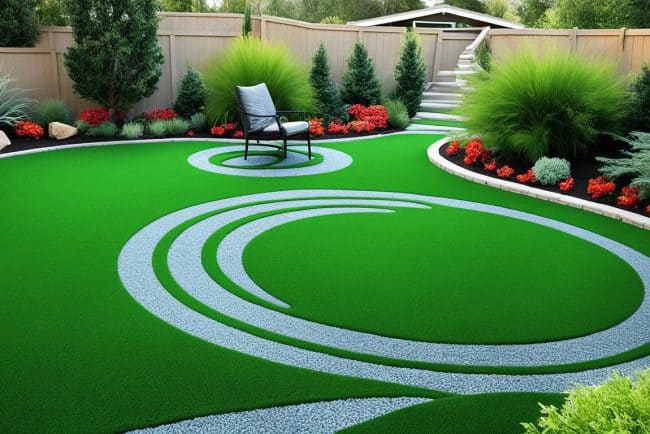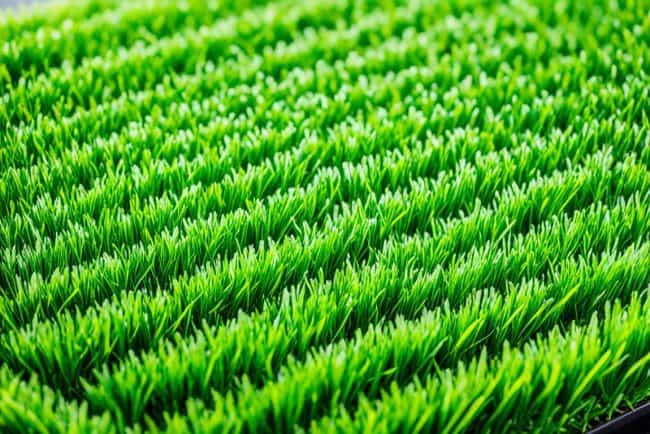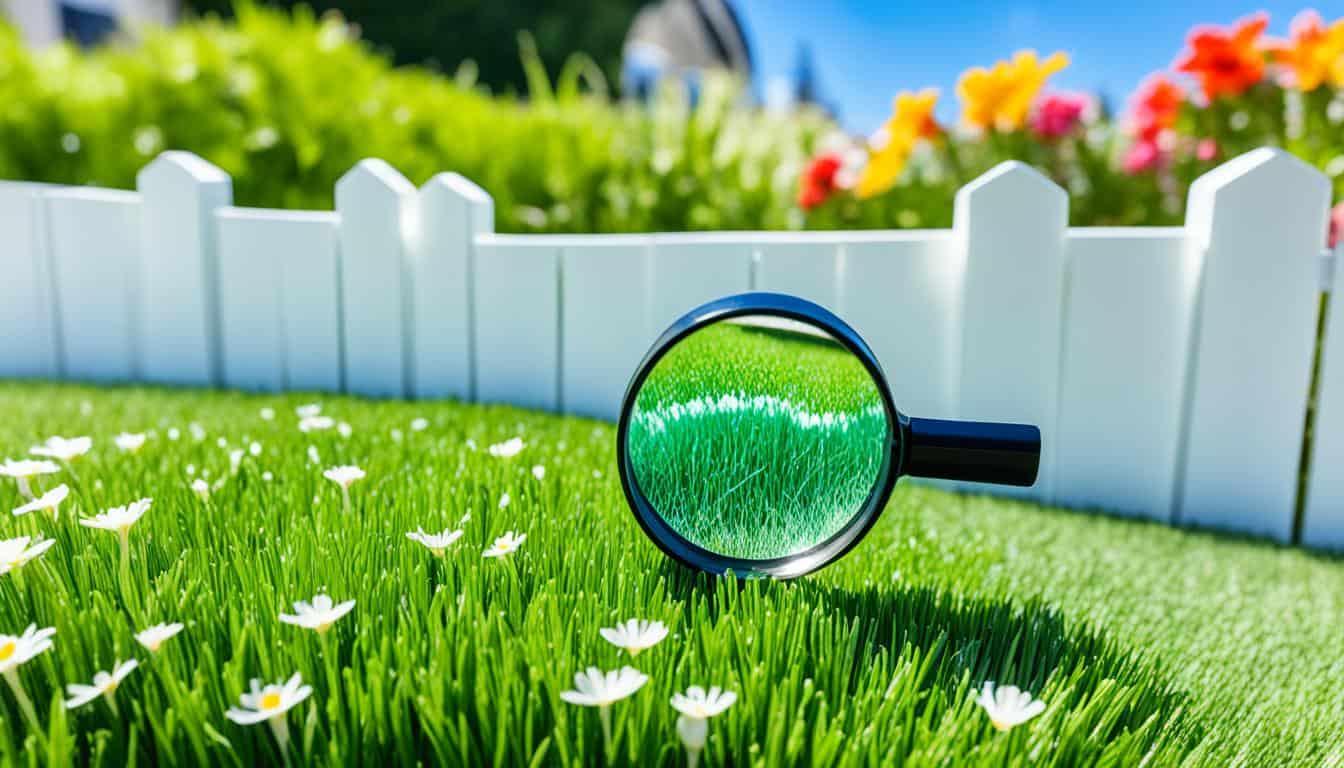
Did you know that installing artificial turf costs about $4,700 on average? Prices range from $2,800 to $6,700. This fact highlights the need to choose wisely when picking synthetic grass for your yard. The right artificial grass is like picking the right shoes for an activity; both decisions greatly affect performance and life span.
Understanding your needs and likes is crucial before exploring your options. The intended use, expected foot traffic, local weather, and budget are key in choosing. By doing your homework and following expert advice, you’ll pick artificial turf that looks real and suits your requirements.
The task of choosing can seem overwhelming due to terms like pile height and face weight. But with expert guidance, picking synthetic turf becomes easier. This guide will give you important tips for finding the perfect artificial grass for your unique situation.
Key Takeaways
- The average installation cost for artificial grass is around $4,700.
- Research is essential to understand your specific lawn needs before selecting turf.
- Choosing the right turf enhances the longevity and appearance of your artificial lawn.
- Key factors include intended change, foot traffic, and the local climate.
- High-quality artificial grass features dense blades and appropriate pile height.
Understanding Artificial Grass Terminology
Learning artificial grass terms is key when choosing the right kind. Knowing these terms helps me pick the best quality for my needs.
Key Terms to Know
I need to know a few important terms when looking at options:
- Face weight: It’s the turf’s weight per square yard. More weight means it’s better and lasts longer.
- Turf density: This is about how many grass blades are in a square inch. More blades mean it looks real and lasts longer.
- Backing: Artificial grass has two layers. They help the grass last a long time and work well.
Importance of Backing and Density
The backing keeps the grass blades up. It makes sure the grass looks good for a long time. If the backing weighs more than 26 ounces, it’s usually high-quality.
Turf density is also crucial. More stitches mean it can handle lots of use. This is especially important for busy lawns or sports fields.
Infill and Its Role in Artificial Grass
Infill is very important for artificial grass. It uses materials like silica sand or crumb rubber. These keep the grass standing up, prevent it from getting flat, and make it feel more natural. Knowing about infill types helps my artificial lawn last longer and feel better.
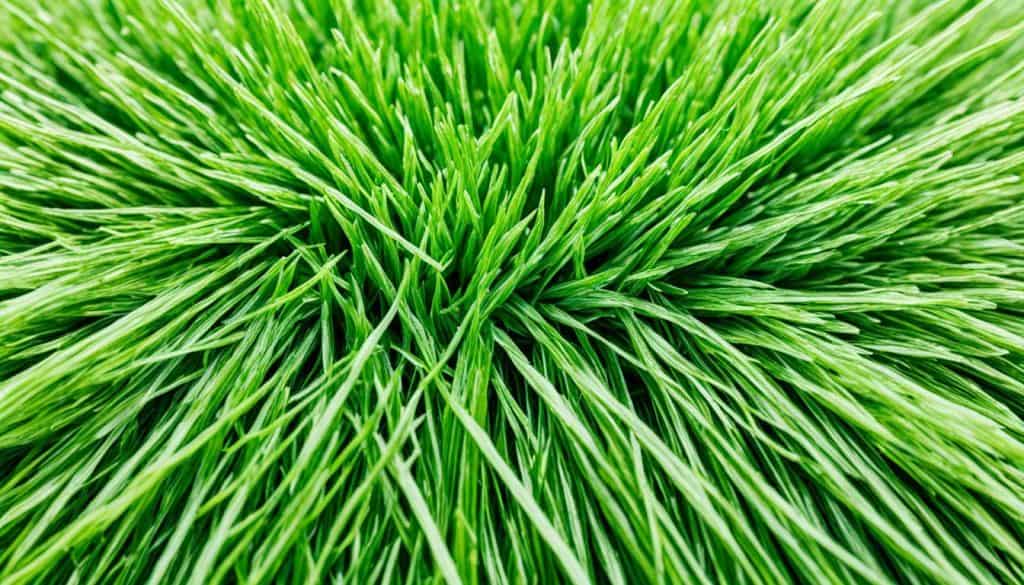
Artificial Grass Tips for Your Specific Needs
Choosing the right customized artificial turf needs care. Think about what you really need to get the best results. Different places use synthetic grass in unique ways. For example, kids’ play areas and pet zones have different needs than areas used a lot by people.
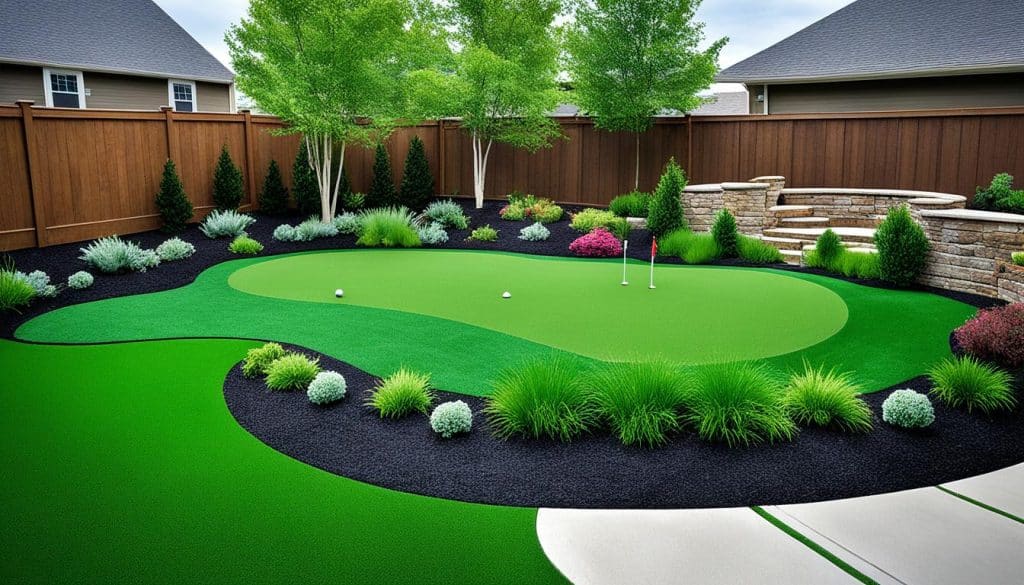
- Areas of Installation: Think about the purpose of your turf. Playgrounds may need durable options that withstand heavy use, while a tranquil garden area can focus more on aesthetics.
- Foot Traffic Levels: High-traffic areas typically demand more robust materials. Consider turf that can endure frequent use without visible wear and tear.
- Maintenance Requirements: Although artificial grass tends to need less care than natural grass, it still requires routine maintenance. Regular rinsing and debris removal help maintain its appearance and longevity.
- Environment: Synthetic grass can thrive in various climates and conditions. In water-restricted areas like Dallas-Fort Worth, the reduced need for irrigation makes it an attractive option.
Considering these factors helps make a good choice. It ensures the customized artificial turf meets my specific needs well. This choice makes sure I make the most out of my outdoor space.
Evaluating Your Budget for Synthetic Turf
Looking into synthetic turf for your space means checking all the costs. It’s important to know about the things that change turf prices. This knowledge stops surprises when it comes to spending.
Average Costs and Budgeting Tips
The cost to put in synthetic grass changes a lot, usually between $2,800 and $6,700. Even though it’s a big amount, planning well for artificial grass brings big pluses later. For example, you won’t spend as much on keeping up your lawn. When making a budget, I like to plan for an extra 10% for any waste during the setup.
- In places like Dallas-Fort Worth, paying for skilled workers can be higher due to tricky landscapes.
- The money spent on materials is a big part of the budget. Higher-quality brands last longer but cost more.
- The weight of the turf’s surface affects both its quality and price. Heavyweights are better but more expensive.
- Thinking about putting it in yourself? It could save money and let you manage your spending better.
Additional Expenses to Consider
There are other costs to think about when budgeting for fake grass. Keeping these in mind is key:
- Infill materials like sand or rubber bits can change in price.
- If you don’t install it yourself, you’ll pay extra for contractors.
- Materials for the ground beneath, affecting drainage and prep, can affect total cost.
- Choosing a pro installation? Remember, seaming tape and glue add to your budget.
Planning for these extra costs makes sure there are no surprises. It means I can enjoy my synthetic turf without worrying about money.
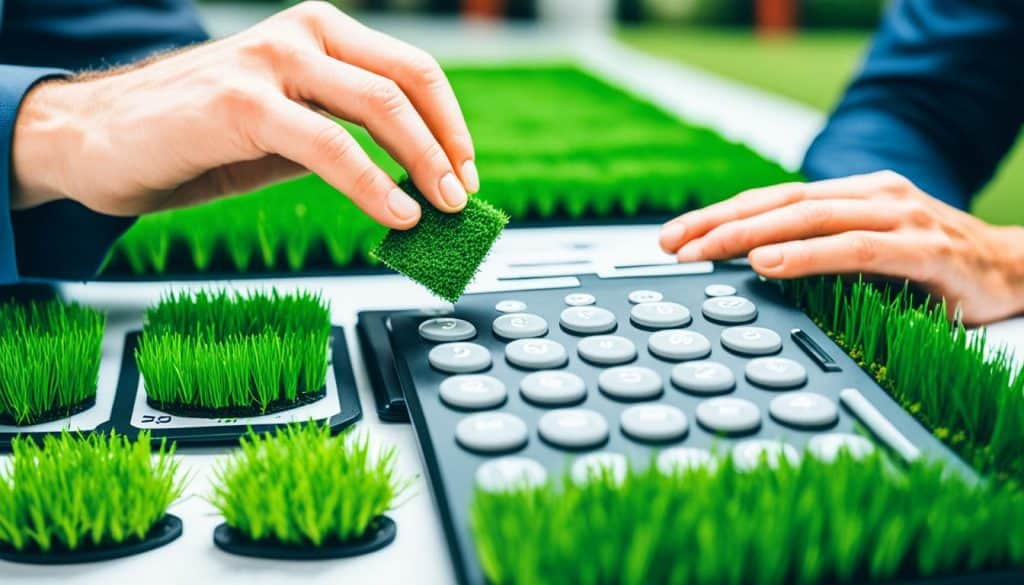
Choosing the Right Pile Height and Face Weight
When you pick out artificial grass, you need to know about pile height and face weight. Pile height is how long the grass blades are. It’s crucial for the grass’s look and how it fits different places. For areas with a lot of people walking on them, it’s best to choose a shorter pile height, like 1/2″ to 1″.
This makes the grass stronger and keeps it looking good. Longer pile heights, over 1”, feel like a lush carpet and look like a well-kept lawn. But, they need more work to stay nice.
If you want your yard to look good without too much hassle, think about both the pile height and how you’ll use the grass. Face weight is also key to how long your artificial grass will last. Grasses with a face weight of 30-40oz might look a bit thin but are cheaper and easier to handle.
On the other hand, a heavier face weight, over 50oz, means thicker, tougher grass. It feels great to walk on, especially in busy areas.
To find the best pile height and face weight, think about how you’ll use the grass. Maybe you want a soft look for a spot without much foot traffic. Or, you might need something sturdier for a sports field.
Assessing Climate Considerations for Your Lawn
Picking artificial grass means thinking about your area’s climate. Different places need different things, especially with sun and rain. Knowing this helps pick the best turf for your yard.
Heavy Rainfall vs. Dry Climates
In rainy areas, choose turf that drains well. I suggest turf with 100% permeable backing. This lets water flow through, stopping pools or damage. In dry areas, pick materials that can handle the drought. You want turf that looks good but doesn’t need much water.
Sun Exposure and Shade Impact
Turf in sunny spots needs special materials. Lighter colors work well because they reflect heat. Adding tall plants or trees can give shade. Shade keeps your turf cool and makes it last longer.
Regular Maintenance and Care for Artificial Grass
Keeping artificial grass in shape is easier than caring for real grass. I’ve learned a few easy tasks can make synthetic turf last longer. Regular upkeep keeps my lawn looking fresh and beautiful.
- I occasionally brush the blades, especially within the first few months, to help the grass settle.
- Rinsing it with a hose removes dirt, including pet waste.
- Quickly cleaning stains with hot water and soap stops them from becoming permanent.
- During regular checks, I ensure the turf nails are secure and am cautious when removing snow to avoid damage.
Synthetic lawns have lower maintenance needs than real grass. They don’t need watering, mowing, or fertilizers. This fact helps them last longer, from 15 to 25 years. It’s a smart choice for many homeowners.
Pet owners have to do a bit more to maintain their lawn. Washing it down often keeps it smelling nice and clean. A special cleaner can remove bacteria and bad smells. This makes the area safe for pets.
In conclusion, artificial grass is easier to maintain than real grass. Yet, it does need regular attention. With proper care and the right products, synthetic turf can look great for years.
Conclusion
Looking back at artificial turf, some key factors stand out for choosing the best type for a yard. Knowing terms like pile height and infill is basic to making good choices. Also, think about how you’ll use and take care of the lawn.
About budget and the environment, it’s wise to understand artificial grass costs upfront. Doing so saves money and helps the planet. Remember, local weather can affect your lawn and how you look after it.
For my parting words, take time, do deep research, and think carefully about what your lawn needs. Keeping your artificial grass clean, brushed, and pet waste managed will keep it looking great. These tips will help you make a lawn that’s not only pretty but lasts long too.
